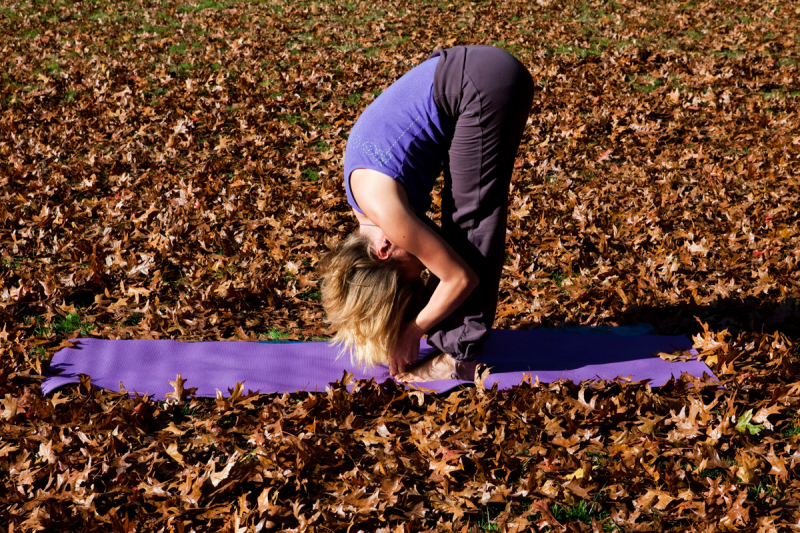Standing Forward Bend (Pada Hastasana)

We have pāda, which means leg, and hastā, which means hand. Pdahastsana is standing and bending forward.
Pdahastsana or Standing Forward Bend mobilizes the body's joints and extends the spine, making it more elastic. It stimulates the neurological system and boosts the blood supply to the brain. The removal of abdominal fat results in a feeling of lightness. Leg and back muscles are stretched and strengthened, and both physical and mental balance is enhanced. Standing Forward Bend practice provides eternal youth.
This position activates the vādhiṣṭhāna cakra and releases energy in the main nāḍīs (astral tubes) along the spine.
Step by step:
- Stand in Tadasana with your hands on your hips (feet together or hip-width distance apart). Exhale and bend forward at the hip joints rather than the waist. Draw the front torso out of the groins and widen the area between the pubis and top sternum as you descend. As with all forward bends, the emphasis is on stretching the front torso as you enter into the posture more fully.
- Bend forward, keeping your knees straight, and lay your hands under your feet (palms facing up), bringing your toes to meet your wrist.
- Straighten your arms and lift your front torso away from your thighs with each inhalation, making your back as concave as possible. Exhale and stretch down and forward, bending your elbows out to the sides to frame your head. Draw the shoulder blades down the back, leaving room between the shoulders and the ears. Lift the sitting bones toward the ceiling, keeping the weight equally distributed through the feet. Slightly inward turn the top thighs.
- Lift and lengthen the front torso somewhat with each inhalation; release a little more fully into the forward bend with each expiration. The torso oscillates nearly slightly with the breath in this manner. Allow your head to hang from the root of your neck, which is located deep between the shoulder blades in the upper back. Hold the position for a total of 20 seconds.
- Release the hands to come out of the posture. Inhale as you bring your hands to your hips and rise up with a flat back.
Beginner’s Tip: Starting with bent knees, place hands beneath the feet, palms facing up, toes contacting the wrist. Lift the buttocks and hamstrings as much as possible to straighten the legs.
Common Mistakes
Ensure that your fold comes from your pelvis, deepening the hip creases, rather than your back. A bent spine that hangs over your legs is the result of a backward fold. Imagine your pelvis as a bowl of water instead. To tip the water out of the front side, rotate the pelvis forward. You can now fold deeply in a safer manner.












